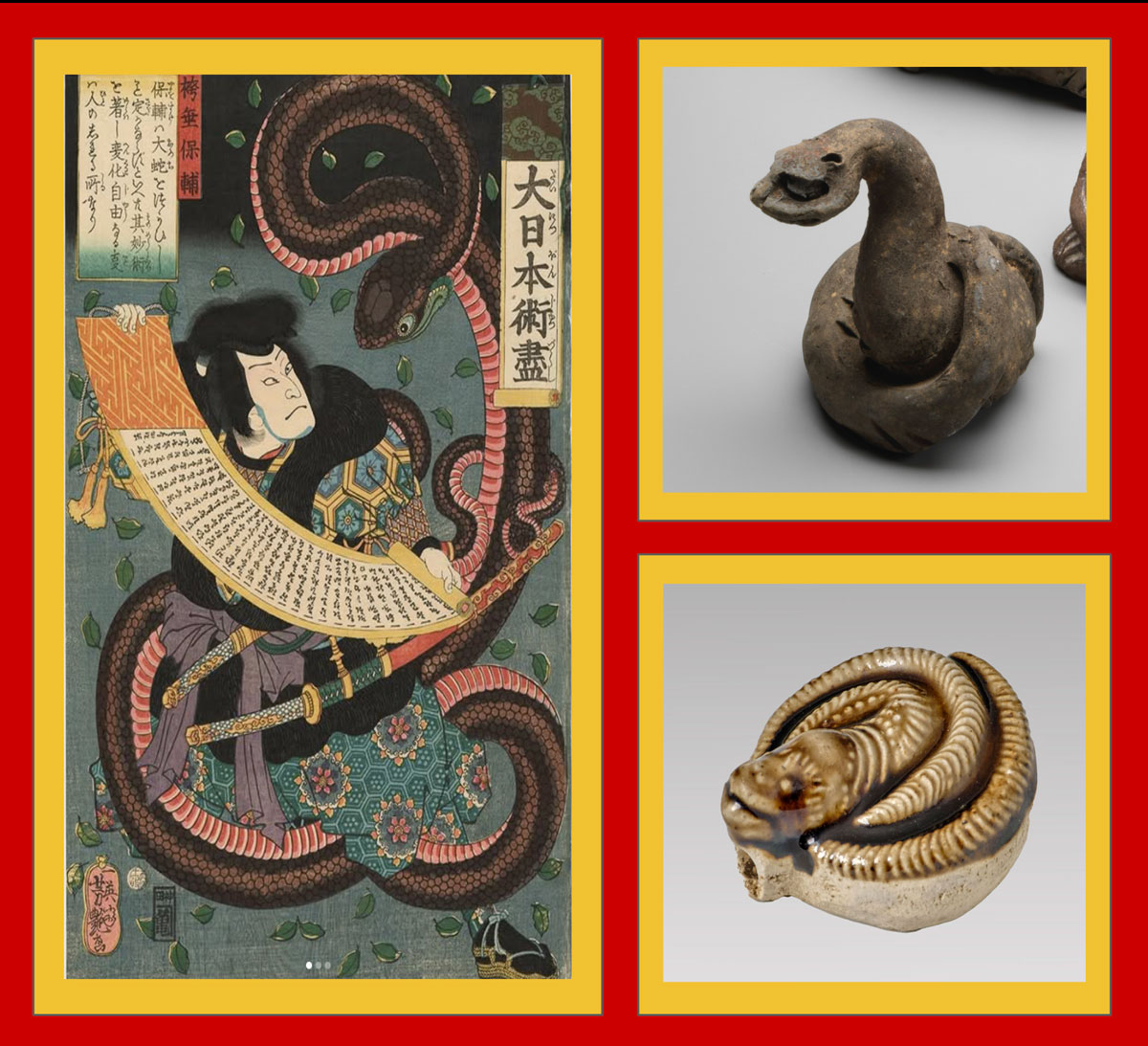
(Left): Utagawa Yoshitsuya (1822-1866), Dai Nihon jutsu zukushi, “An Assortment of Magic in Great Japan,” published 1861, courtesy Egenolf Galley Japanese Prints; (Top Right): An Earthenware Snake (sixth from set of twelve Chinese zodiacal figures), Yuan Dynasty, late 13th-14th century, h: 12 cm, courtesy Kaikodo LLC; (Bottom Right): Snake Whistle, Jingdezhen, Southern Song Dynasty 1127-1279 AD, China, courtesy Zetterquist Galleries
As we welcome the Year of the Snake today, the sixth animal in the zodiac cycle, we at Asia Week New York extend our warmest wishes for a happy, healthy, and prosperous year ahead!
Throughout East Asia and beyond, millions around the world come together to celebrate this auspicious holiday, embracing cultural traditions that promote well-being and prosperity for the year ahead. Although customs differ by region, some of the most widespread practices include tidying up the home to clear away lingering bad luck, adorning spaces with red decorations to invite good fortune, paying tribute to ancestors, reconnecting with family, setting off firecrackers to chase away evil spirits, giving red envelopes filled with money to children and those in junior roles, and enjoying an abundance of special foods. Symbolic dishes include fish, representing abundance; dumplings shaped like ancient gold ingots to signify wealth; long noodles for longevity; and sweet rice cake, associated with progress and achievement in the New Year. Meanwhile, activities believed to dispel good fortune, such as washing hair or cleaning floors, are deliberately avoided. This joyful two-week observance culminates with the Lantern Festival on the 15th day of the New Year.
A symbol of transformation and wisdom, the Snake inspires opportunities for personal growth and meaningful change. In contrast to the bold and extroverted Dragon of last year, the Snake embodies calmness, introspection, and quiet strength. Those born in the Year of the Snake are often admired for their intelligence, intuition, and enigmatic charm.
The portrayal of snakes throughout the long history of Asian art also carries deep cultural and spiritual significance, symbolizing protection, rebirth, and good fortune. Their ability to shed skin represents transformation and renewal, making them metaphors for immortality and the cycles of life. In Hinduism and Buddhism, divine serpent beings like Nāgas are depicted as protectors of sacred spaces, guarding temples, treasures, and even deities. In some myths, they are considered rain-bringers, signifying fertility and abundance. Snakes are also seen as intermediaries between the human and divine realms, representing both the seen and unseen forces of the universe. In Daoist philosophy, their sinuous forms evoke the flow of energy or “Qi” in nature harmonizing with the elements, such as wind, rain, and electricity. In Japanese art, the snake or hebi frequently symbolizes protection, good luck, and the balance of nature, often linked to water deities and the seasons. Representing both creation and destruction, wisdom and danger, snakes hold a duality that underscores their mystical allure, making them enduring symbols of harmony, transformation, and cosmic connection in Asian art.
May this Lunar New Year be filled with cherished moments with family and friends, and enriched by the beauty of inspiring art!
